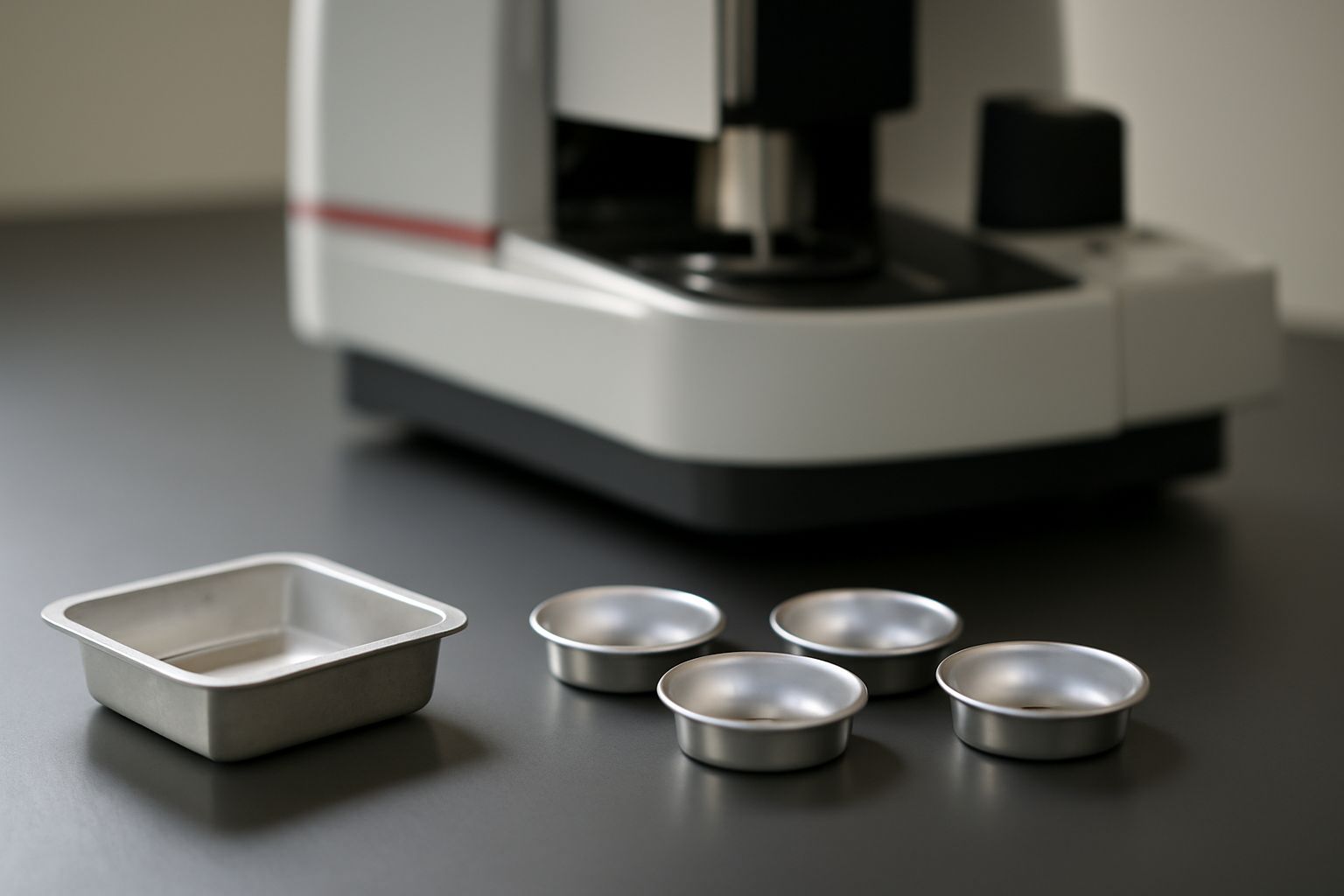Your cart is empty.
shop now
Your cart is empty.
shop now
Many labs struggle to keep up with technical breakthroughs that change the way TGA-DSC pans are chosen. Using outdated materials limits accuracy and blocks progress in thermal analysis.
Recent advancements in material science and thermal analysis techniques have led to better sample pan materials, improved design, and evolving standards. Labs adopting new technologies see gains in precision, reliability, and efficiency.

I stay up to date by tracking application notes, supplier updates, and the latest published research. Adapting to these shifts helps labs avoid costly mistakes and secures future readiness. Here, I share exactly how global trends now shape TGA-DSC sample pan selection.
Outdated or basic pan options often melt, warp, or react with advanced samples, wasting both research time and money. The rise of new material technologies changes what labs can achieve.
Recent innovations include nanomaterials, advanced ceramics, and coated metals. These materials resist higher temps, lower contamination, and add precision to results.
| Pan Material | Tech Advance | Key Benefit | Application | More Info |
|---|---|---|---|---|
| Nanomaterials | Controlled structure, purity | Optimal signal, less noise | Trace & high-purity testing | ScienceDirect |
| Advanced ceramics | Toughness, custom form | High temp, harsh samples | Ceramics, metals | Nature |
| Coated metals | Protective, inert layer | Lower reactivity | Corrosive/volatile samples | Lab supplier |
I test every new material in small runs before full adoption. Nanomaterials and ceramics add a clear edge for both precision and routine reliability across all TGA-DSC workflows.
Modern TGA-DSC instruments use rapid scanning, tiny samples, and mixed heating profiles that standard pans cannot always handle. I hear common feedback about lost accuracy when using old designs.
Sample pan design now includes micro-volume styles, enhanced sealing, and pans for automated instruments. These changes allow for faster tests, better repeatability, and new sample types.
| Technique | Needed Pan Feature | Benefit | Market Sample | Source |
|---|---|---|---|---|
| Rapid scanning | Thin wall, high response | Sharper peaks | NETZSCH Micro-DSC | Instrument manual |
| Auto-sampling | Standardized shape, RFID tag | No error in loading | Mettler Toledo, REDTHERMO | Supplier specs |
| Multi-step heating | Hermetic, high-temp seal | Prevent leaks | Lab SOP | ScienceDirect |
I look for pans with supplier documentation that matches my planned techniques. Small, structural differences in modern pans now give significant gains in throughput and accuracy.
Regulated labs and industrial buyers face frequent updates to QA standards. It is easy to fall out of compliance if equipment or consumable changes are ignored.
Industry groups now demand stricter pan material validation, data traceability (such as batch codes), and test reproducibility. Standards now cite approved materials and dimensional tolerances as audit requirements.
| Standard Body | Requirement | Impact on Pans | Audit Point | Reference |
|---|---|---|---|---|
| ASTM | Cert. on dimension/material | Supplier spec review | Fit tolerance/label check | ASTM E793 |
| ISO | Traceable batch, documentation | Batch code for each lot | SOP, audit log | ISO 17025 |
| FDA/EMA | Material & record approval | Only certified pans | QA certificate | FDA QSR |
I update my compliance plan each time standards change, using only pans with up-to-date documentation. The payoff is fewer audit delays and less rejected data in regulated work.
Labs want even better data traceability, minimal wastage, and pans that fit automated systems. Market leaders and material scientists are building smarter consumables to answer these needs.
Future prospects include RFID-tagged pans, universal-fit dimensions for all suppliers, and even greener materials to cut lab waste. Digital tech and supply chain traceability are next in TGA-DSC innovation.
| Innovation | Main Benefit | Stage | Adopter Profile | Further Info |
|---|---|---|---|---|
| RFID Pan Tagging | Automated record-keeping | Pilot, active | Large QA labs | ScienceDirect |
| Universal-fit Pans | Cross-brand compatibility | Emerging | Global procurement | Instrument catalogs |
| Eco-friendly material | Reduce landfill, green audit | Development | Corporate, academic labs | Biodegradable material |
I partner with my key suppliers and participate in pilot programs for new concepts. The sooner I learn these advances, the more I can lead my team or clients in getting value from the industry’s future.
Staying ahead in TGA-DSC analysis means keeping pace with global innovation. Smart sample pan selection builds the foundation for reliable, cost-effective, and sustainable laboratory results.
Contact technical support: info@redthermo.com